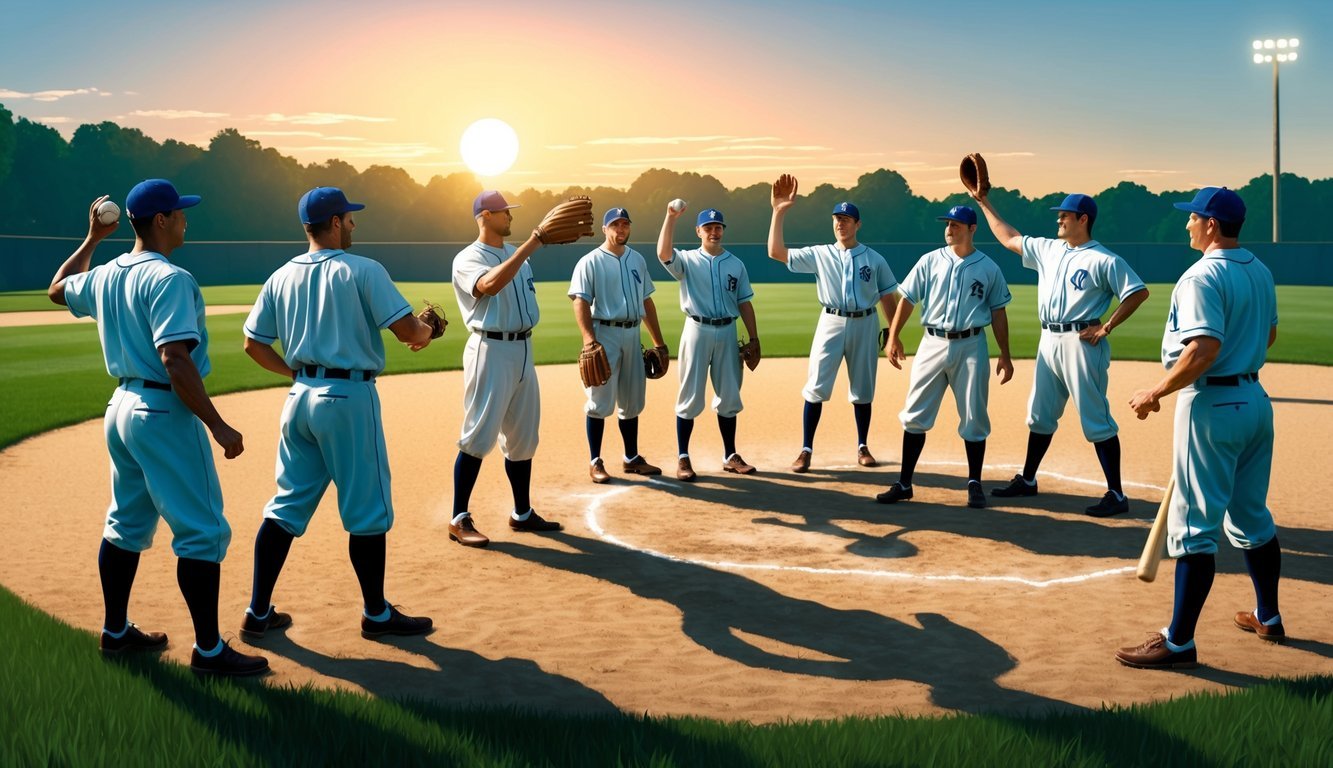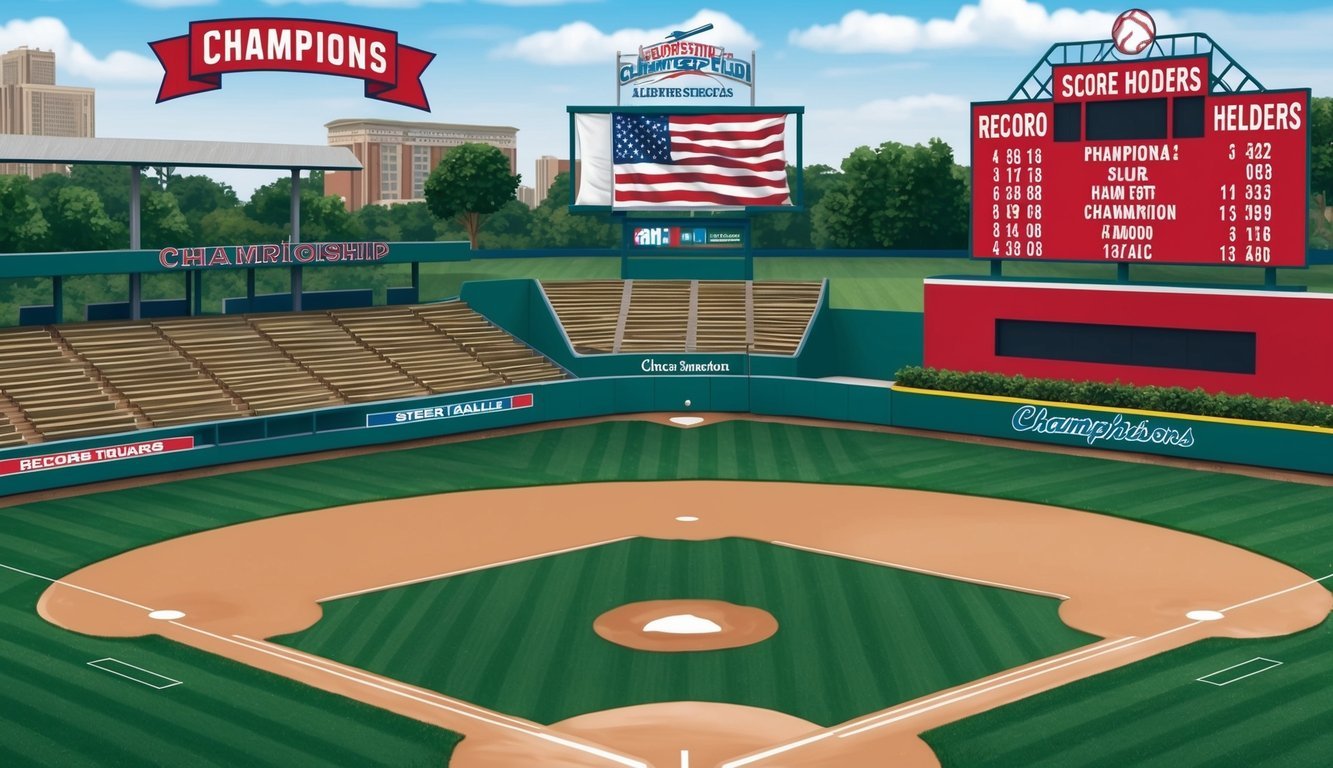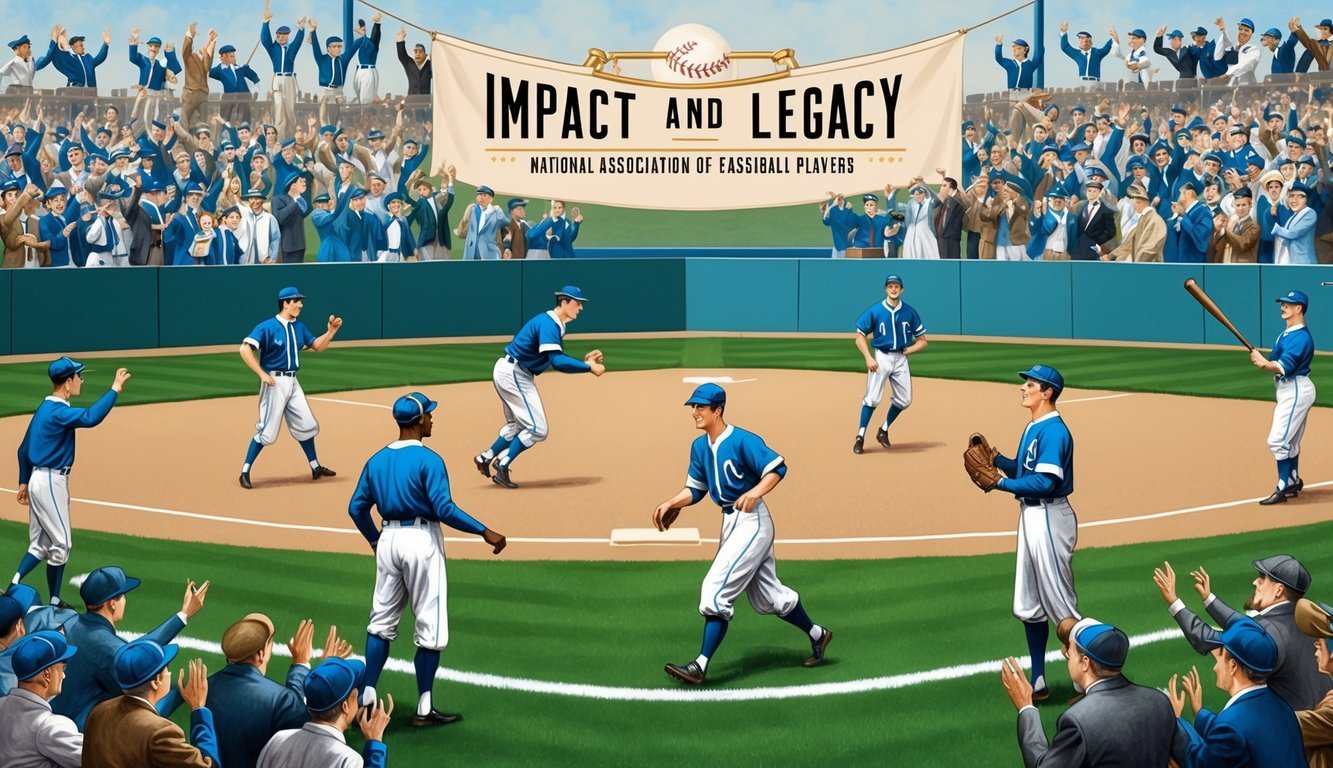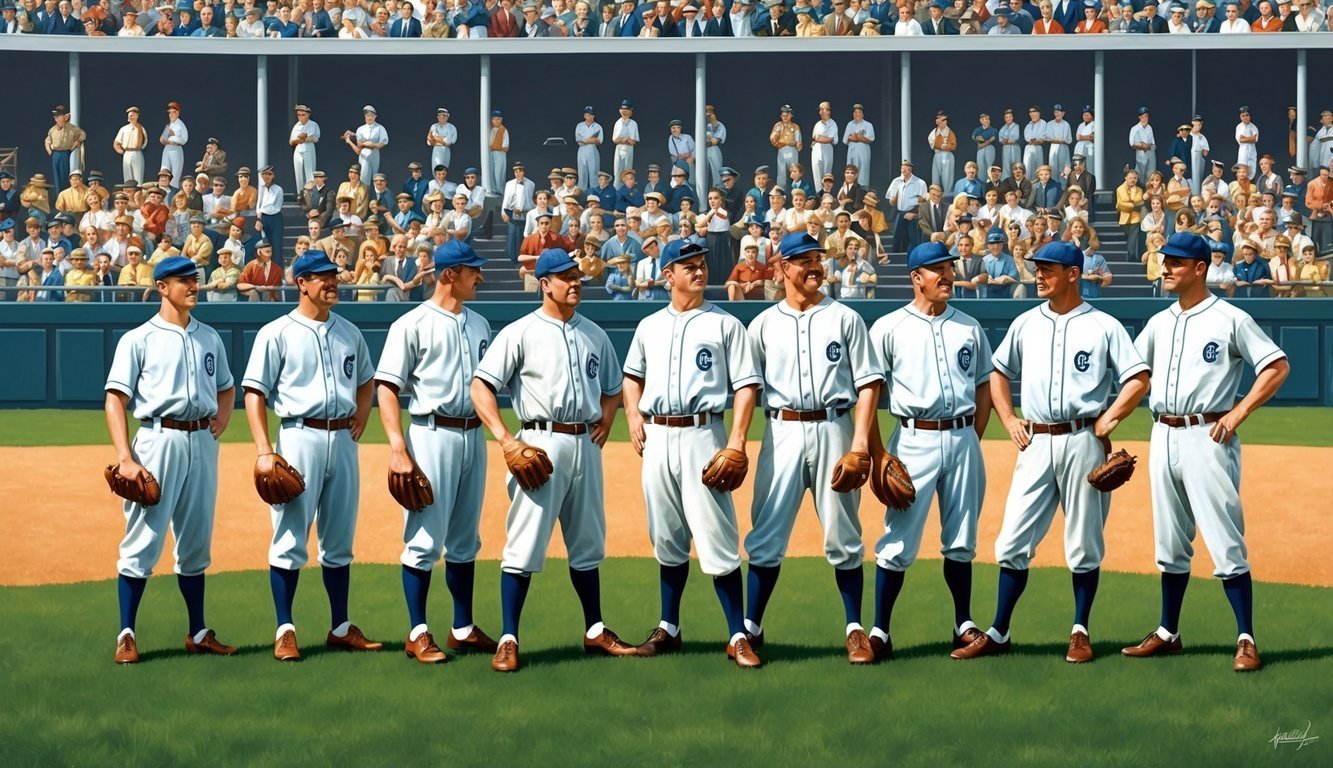The National Association of Base Ball Players (NABBP) played a crucial role in transforming baseball from a casual pastime into an organized, competitive activity that laid the groundwork for professional leagues.
Founded in 1857, the NABBP brought together baseball clubs from the New York City area to establish a unified set of rules and regulations for the sport.
As baseball’s popularity grew across the United States, the NABBP expanded its reach beyond New York.
The organization faced challenges during the Civil War but rebounded afterwards, overseeing the sport’s rapid growth and evolution.
The NABBP initially maintained an amateur status for players, but growing tensions between amateurism and professionalism eventually led to significant changes in the baseball landscape.
Formation and Early Years

The National Association of Base Ball Players emerged during a pivotal time in American history, shaping the future of the sport.
Its creation brought structure and organization to the rapidly growing game of baseball in the mid-19th century.
Inception During the Civil War Era
The National Association of Base Ball Players formed in 1857, amid the tensions leading up to the Civil War.
Baseball’s popularity surged during this period, providing a welcome distraction from the nation’s troubles.
New York City became the epicenter of baseball’s growth.
In January 1857, representatives from 16 area clubs gathered at Smith’s Hotel on Broome Street.
Their goal? To establish uniform rules and govern the burgeoning sport.
This meeting marked the official birth of the NABBP.
The organization quickly set about standardizing gameplay and promoting baseball across the country.
New York Knickerbockers and the Growth of Clubs
The New York Knickerbockers played a crucial role in the NABBP’s formation.
As one of the earliest organized baseball clubs, they helped lay the groundwork for the association.
Founded in 1845, the Knickerbockers had already established many of the rules that would become standard.
Their influence on the NABBP was significant.
Membership in the NABBP grew rapidly:
- 1858: 25 clubs
- 1859: 50 clubs
- 1861: Over 200 clubs
By 1869, the association had expanded far beyond its New York roots.
Clubs from Philadelphia, Washington D.C., and even as far as San Francisco had joined the ranks.
This growth led to the historic 1869 season, when the Cincinnati Red Stockings became the first fully professional team.
Their success signaled the dawn of a new era in baseball.
Rise of Professionalism
The late 1860s marked a pivotal shift in baseball as the sport transitioned from amateur pastime to professional enterprise.
This era saw the emergence of paid players and the formation of the first professional league.
Transition to Professionalism
In 1869, the Cincinnati Red Stockings made history as the first fully professional baseball team.
They recruited top players from across the country, offering salaries and travel expenses.
This bold move proved successful, with the Red Stockings going undefeated in their first season.
Other clubs took notice.
Soon, more teams began paying their best players to stay competitive.
This trend spread rapidly, changing the landscape of the sport.
The rise of professional clubs created tension within the National Association of Base Ball Players (NABBP).
The organization had long championed amateurism, but now faced a growing divide between amateur and professional teams.
Formation of the National Association
By 1871, it became clear that a new structure was needed for professional baseball.
In response, the National Association of Professional Base Ball Players was formed.
This new league featured ten teams in its inaugural season.
It introduced a more structured schedule and standardized rules for player contracts and team operations.
The National Association marked the birth of professional sports leagues in America.
It paved the way for future organizations like the National League and eventually Major League Baseball.
While short-lived, lasting only five seasons, the National Association’s impact was significant.
It demonstrated the viability of professional baseball as a business and entertainment spectacle.
Notable Teams and Players
The National Association featured several standout clubs and influential figures who shaped early professional baseball.
These teams and players left an enduring mark on the sport’s development.
Dominant Clubs and their Influence
The Boston Red Stockings emerged as a powerhouse in the National Association.
Led by player-manager Harry Wright, they claimed four championships in five years.
Their success set a high standard for professional teams to follow.
The Chicago White Stockings also made waves in the league.
They won the inaugural championship in 1871, setting the stage for Chicago’s long baseball tradition.
Another notable club was the Philadelphia Athletics.
They consistently fielded competitive teams and helped establish Philadelphia as a baseball hotbed.
These dominant clubs attracted talented players and large crowds.
Their rivalries and on-field performances captivated fans, helping to grow the sport’s popularity.
Key Figures in Early Baseball
Harry Wright stands out as one of the most influential figures in early professional baseball.
As player-manager of the Boston Red Stockings, he revolutionized team organization and strategy.
Cap Anson began his legendary career in the National Association.
He played for several teams, including the Philadelphia Athletics and Chicago White Stockings.
Anson’s skills and leadership would later make him one of baseball’s first superstars.
Other notable players included Al Spalding, who excelled as both a pitcher and executive.
Deacon White, a skilled catcher and third baseman, was another standout performer during this era.
These early stars helped establish professional baseball as a viable career and laid the groundwork for future generations of players.
Championships and Record Holders

The National Association of Base Ball Players saw fierce competition among clubs vying for glory.
Teams and players set impressive marks during this formative era of baseball.
Notable Championships and Winners
The Brooklyn Atlantics emerged as a dominant force, capturing multiple championships in the 1860s.
They clinched titles in 1861, 1864, and 1865, establishing themselves as the team to beat.
The Philadelphia Athletics also enjoyed success, winning championships in 1866 and 1867.
Their rivalry with the Atlantics thrilled fans and elevated the sport’s popularity.
In 1868, the New York Mutuals claimed the coveted pennant.
This victory marked a shift in power and highlighted the competitive balance within the league.
Individual and Team Records
Players set remarkable individual records during the NABBP era.
Lip Pike of the Athletics stood out for his hitting prowess, reportedly smashing six home runs in a single game in 1866.
The Eckford of Brooklyn made history by winning 45 consecutive games between 1859 and 1862.
This incredible streak showcased their dominance and set a high bar for future teams.
Pitching feats were also noteworthy.
Jim Creighton of the Excelsior club gained fame for his devastating fastball and nearly unhittable curveball, revolutionizing the art of pitching.
Impact and Legacy

The National Association of Base Ball Players left an indelible mark on America’s pastime.
Its efforts to standardize rules and promote organized competition set the stage for baseball’s evolution into a professional sport.
As the organization gained momentum, it fostered a spirit of camaraderie among players and fans alike, paving the way for local leagues and tournaments.
The National Association’s commitment to nurturing talent and encouraging fair play not only enriched the experience of spectators but also pushed athletes to refine their skills, leading to discussions about best practices.
In this context, many enthusiasts began to share ‘pop out baseball gameplay tips‘ that helped aspiring players improve their performance on the field.
Influence on Modern Baseball
The NABBP’s rulebook formed the foundation for today’s game.
Many regulations introduced by the association, such as nine players per side and nine-inning games, remain integral to baseball.
The organization’s emphasis on fair play and sportsmanship continues to shape the sport’s ethos.
The NABBP also popularized baseball beyond its New York origins.
As clubs from different regions joined, the game spread across the country.
This expansion laid the groundwork for baseball’s eventual status as America’s national pastime.
Transition to Major Leagues
As baseball’s popularity grew, the push for professionalism also grew.
The NABBP’s amateur status became unsustainable.
This led to the formation of the National Association of Professional Base Ball Players in 1871.
This first pro league paved the way for the National League’s creation in 1876.
The NL adopted many of the NABBP’s organizational structures and rules.
It also built upon the NABBP’s efforts to establish a national presence for the sport.
The NABBP’s legacy lives on in Major League Baseball.
Many modern practices trace their roots to this pioneering organization.
From scheduling to player contracts, baseball fans today enjoy a sport shaped by the NABBP’s foundational work.
